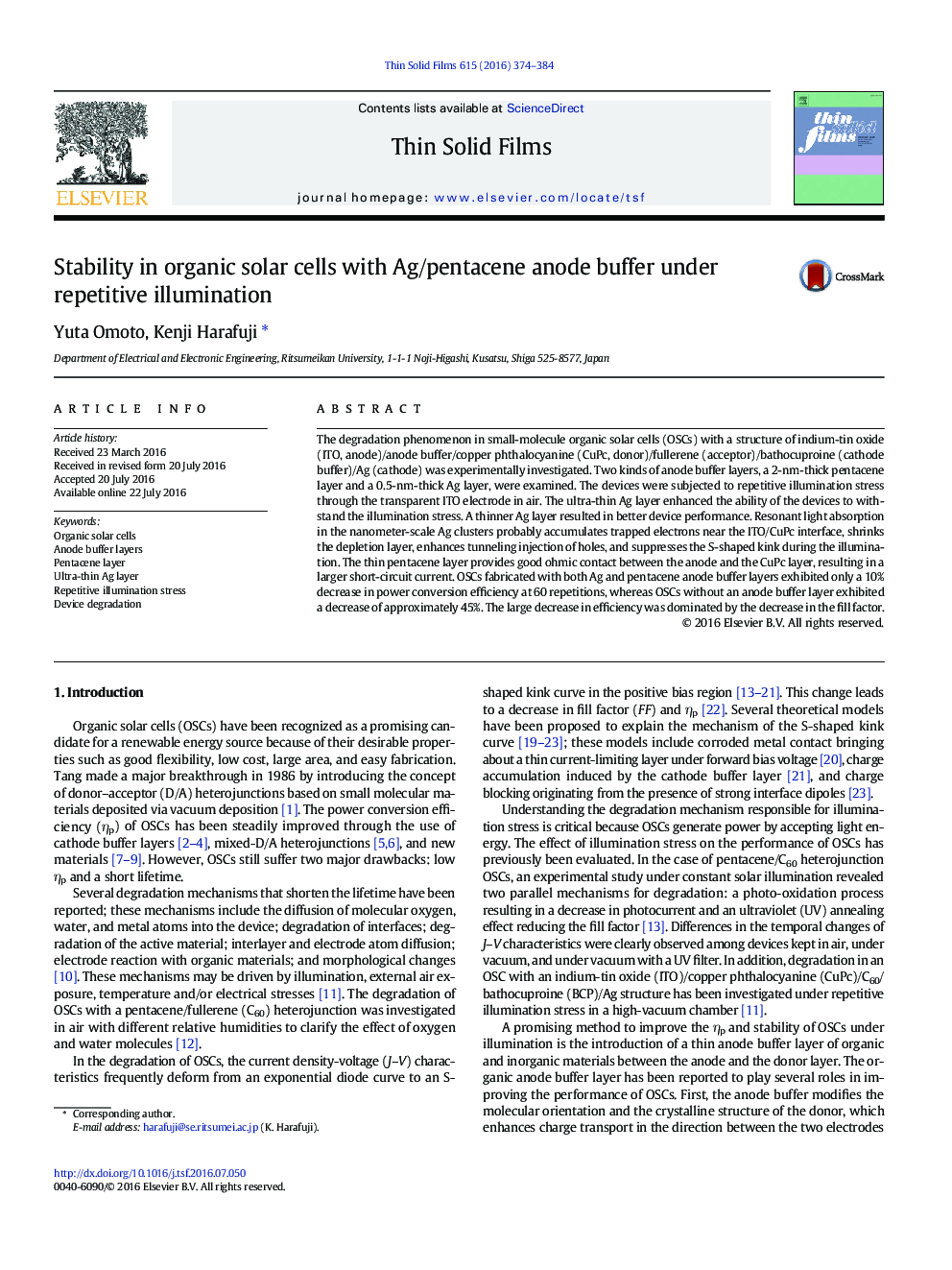| کد مقاله | کد نشریه | سال انتشار | مقاله انگلیسی | نسخه تمام متن |
|---|---|---|---|---|
| 1663867 | 1517995 | 2016 | 11 صفحه PDF | دانلود رایگان |
• Thin pentacene and Ag layers as an anode buffer are proposed for organic solar cell.
• The thin pentacene layer provides a large short-circuit current and high efficiency.
• The ultra-thin Ag layer provides durability against an illumination stress.
• Plasmon effect by Ag clusters enhances hole injection, and suppresses degradation.
• The combinational use of the two layers results in better device performance.
The degradation phenomenon in small-molecule organic solar cells (OSCs) with a structure of indium-tin oxide (ITO, anode)/anode buffer/copper phthalocyanine (CuPc, donor)/fullerene (acceptor)/bathocuproine (cathode buffer)/Ag (cathode) was experimentally investigated. Two kinds of anode buffer layers, a 2-nm-thick pentacene layer and a 0.5-nm-thick Ag layer, were examined. The devices were subjected to repetitive illumination stress through the transparent ITO electrode in air. The ultra-thin Ag layer enhanced the ability of the devices to withstand the illumination stress. A thinner Ag layer resulted in better device performance. Resonant light absorption in the nanometer-scale Ag clusters probably accumulates trapped electrons near the ITO/CuPc interface, shrinks the depletion layer, enhances tunneling injection of holes, and suppresses the S-shaped kink during the illumination. The thin pentacene layer provides good ohmic contact between the anode and the CuPc layer, resulting in a larger short-circuit current. OSCs fabricated with both Ag and pentacene anode buffer layers exhibited only a 10% decrease in power conversion efficiency at 60 repetitions, whereas OSCs without an anode buffer layer exhibited a decrease of approximately 45%. The large decrease in efficiency was dominated by the decrease in the fill factor.
Journal: Thin Solid Films - Volume 615, 30 September 2016, Pages 374–384
